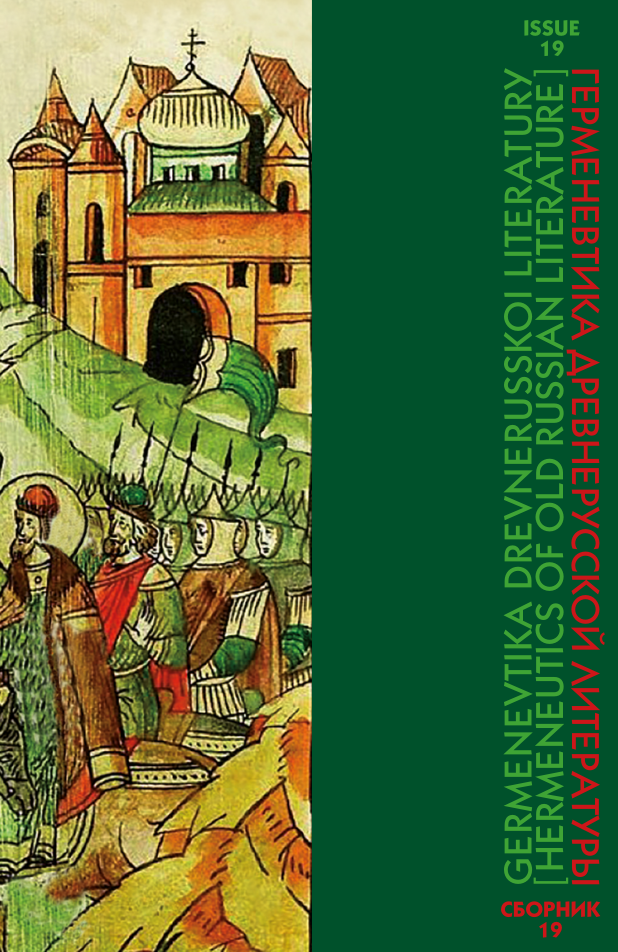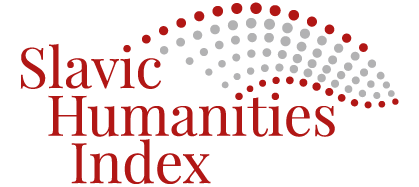Monographs
- Category: Monographs
- Imprint: Moscow-Brussels, Conference Sainte Trinity du Patriarcate de Moscou ASBL; Svyato-Ekaterininskii muzhskoi monastyr' Publ., 2012. 144 p. (In Russ.)
Abstract: The book is about a little-known text of the old homiletic tradition ― a laudable speech on the occasion of The Intercession of Our Most Holy Lady Theotokos and Ever-Virgin Mary, created by an unknown word master. The publication on the manuscripts from the archive of the Moscow theological Academy reproduced the text of the speech in the original orthography with a translation into modern Russian language and textual and cultural commentary, and then examines the content of the speech, reveals its ideological and artistic connection with the Hesychasm of St. Gregory Palamas and the literary style of “weaving of words”, the place and time of speech creation based on a wide range of facts from the history of existence of the feast of Intercession of the Theotokos in medieval Russia.
Available at: PDF
Essays on the Old Russian Literature. Materials for the History of Russian Patrology and Hagiography
- Category: Monographs
- Imprint: Sergiev Posad, Izd-vo Moskovskoi duhovnoi akademii Publ., 2012. 288 p. (In Russ.)
Abstract: The book contains scientific and popular scientific articles on the issues of textology, hermeneutics, historical and literary criticism and poetics of separate texts of old Russian literature and literature relating to the 11th–17th centuries. In addition, some issues are touched the history, culture and church life in Old Russia.
Available at: PDF
- Category: Monographs
- Imprint: Moscow, RSHU Publ., 2012. 330 p. (In Russ.)
Abstract: The book provides a comparative analysis of Russian and Swedish works created during the Northern war. Discusses some of the trends in panegyric literature of each of the warring countries, and a major ‘military’ theme, explores the perception of the national symbols of the opponent country, the works of authors of foreign and some Russian translations of Swedish books in the Carolean epoch.
- Category: Monographs
- Imprint: Moscow, ROSSPEN Publ., 2011. 551 p. (In Russ.)
Abstract: Old Russian literature is usually considered evolutionarily, in terms of the main stages of its history. However, in the 12th century, attempts were made to present medieval bookishness as a “system of the whole.” The book offered to the reader’s attention is not devoted to evolution, but to the unchangeable essence of the Eastern Slavic art of the word. What ensured the continuity, stability of tradition, the unity of intellectual culture and specific thinking skills over the centuries? The author gives his answer to this question by reconstructing the literary custom of Old Russia. This custom was followed, but no one wrote about it. Russian medieval literature did not develop a system of rigid rules, did not know theoretical rhetoric and normative poetics. Scribes of the 11th–17th centuries turned to literary custom only insofar as they mastered the special methods of work and followed exemplary texts, being at the same time expressing original semantic intentions. The author of a survey and analytical study invites readers to touch the secrets of the craftsmanship and literary techniques of the Middle Ages. The book is designed for students, graduate students and teachers of humanitarian faculties and universities, appeals to philologists, historians, culturologists and a wide audience.
- Category: Monographs
- Imprint: Moscow, Rukopisnye pamyatniki Drevnei Rusi Publ., 2009. 403 p. (In Russ.)
Abstract: The book examines the literary means and methods of narration used in the texts of Old Russian literature of the 11th–13th centuries and giving them extraordinary expressiveness, brightness, and sometimes figurativeness. The greatest attention is paid to the chronicles ― the famous Tale of Bygone Years, which will soon be 900 years old. There are excursions into the history of social mentality of the most old period. The book is intended for medievalists, teachers, students and all those on whom reading of Russian literature makes an aesthetic impression.
- Category: Monographs
- Imprint: Moscow, Al'fa-M Publ., 2008. 318 p. (In Russ.)
Abstract: In the collective monograph the phenomenon of quasi-science is investigated. The cultural foundations of astrology, ufology, parapsychology, paramedicine, quasi-history, etc. are being clarified. Particular attention is paid to the most odious form of quasi-science, quasi-scientific mythology. The essence, structure and types of quasi-scientific mythology, the ways of its formation and functioning in the system of spiritual culture are analyzed. The folklore genealogy of quasi-scientific myths is traced. In the field of view of the authors - the future and science, and quasi-science. The study was funded by the Russian Humanitarian Science Foundation (Project No. 06-03-00260a). For researchers, teachers, students and graduate students, as well as all interested in the problems of the development of science and culture.
- Category: Monographs
- Imprint: Moscow, Yazyki slavyanskoj kul'tury Publ., 2007. 104 p. (Studia philologica. Series minor). (In Russ.)
Abstract: The book is about the text semantics of the main edition of The Legend of Mamay by version Y in comparison with other versions of the text created in the 16th century. The Researcher, in particular, reveals the systematic compiler use of this version of the Legend of numbers 8 and 4 not only as narrative details, but also as a module of narrative architectonics. Commenting on this feature, he defines the range of possible biblical, liturgical, theological and philosophical, historical and literary, and ultimately ideological and aesthetic ideas that could guide a compiler of the text.
Available at: PDF
- Category: Monographs
- Imprint: Moscow, Yazyki slavyanskoj kul'tury Publ., 2007. 307 p. (In Russ.)
Abstract: The book examines the original old Russian narratives about the miraculous Tikhvin icon of the Mother of God in the context of medieval culture and specific historical circumstances and is considered from the point of view of their literary fate, ideological and artistic specificity and correlation with the complex of author’s religious, political and aesthetic ideas. In the traditions of the national historical and philological science, the monograph is not only a study: in the appendices to the latter the most important texts for the formation of the entire legend about the Shrine, also genre related text The Tale about the Svyatogorsk icons are published. The work continues the study of old Russian legends about icons, which were barely started by Russian medieval studies, and is intended for historians, philologists, art historians and all those who are interested in the life of old Russian society.
Available at: PDF
- Category: Monographs
- Imprint: Мoscow, Sputnik + Publ., 2007. (In Russ.)
Abstract: The book is about the identification of the tragic image specifics in the works of Russian protopope Avvakum. The book explores the ways of creating a tragic expression, analyzed leading motives and end-to-end tragic symbols, considered how to create images of the tragic heroes on the material of all Avvakum’s works. Disclosure from the artistic point of view of the death of faith theme as the main tragic theme of the writer allows us to take a fresh look at the work of protopope Avvakum ― not only as a writer-exposer, preacher, but also as a writer with a steady tragic worldview.
- Category: Monographs
- Imprint: Moscow, IMLI Publ., 2006. 277 p. (In Russ.)
Abstract: The monograph is a comprehensive study of the Russo-Swedish literary relations in the late 17th–18th centuries. The book analyzes translated works and works written for foreign ― Swedish or Russian language, studied similar literary phenomena, deals with texts that contain reviews about the ‘neighboring’ people and its literature.
















